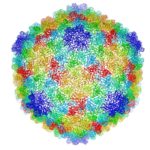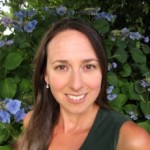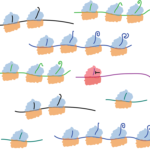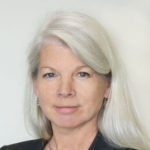Cryo-electron microscopy is a critical tool used to advance biochemical knowledge. Now Pavel Afonine, research scientist, and Molecular Biophysics and Integrated Bioimaging Division Director Paul Adams have extended cryo-EM’s impact further by developing a new computational algorithm that was instrumental in constructing a 3-D atomic-scale model of bacteriophage P22 for the first time. Read more in the Berkeley Lab News Center.
Researchers Probe for Cancer Clues In a Sample of Blood
One day, patients may be able to monitor their body’s response to cancer therapy just by having their blood drawn. A new study, led by Amy Herr, faculty engineer in the Biological Systems & Engineering Division, has taken an important step in that direction by measuring a panel of cancer proteins in rare, individual tumor cells that float in the blood. Read more in Berkeley News.
@LBNLBioSci Reaches 500 followers
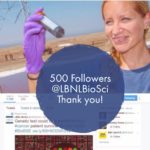 The Biosciences Area Twitter account @LBNLBioSci has reached 500 followers this month! Follow @LBNLBioSci to stay up to date about the latest Biosciences Area scientific news, and to view our Twitter campaigns visit our Storify page.
The Biosciences Area Twitter account @LBNLBioSci has reached 500 followers this month! Follow @LBNLBioSci to stay up to date about the latest Biosciences Area scientific news, and to view our Twitter campaigns visit our Storify page.
New Drug Strategy: Target Ribosome to Halt Protein Production
The discovery of a chemical compound that halts the production of a small set of proteins while leaving general protein production untouched suggests a new drug search strategy: Find compounds that target undesired proteins before they are even made. In a paper appearing in the journal PLOS Biology, described the work of researchers at the University of California, Berkeley, and Pfizer Worldwide Research and Development. Faculty scientist Jamie Cate, Structural Biology Department Head in the Molecular Biophysics and Integrated Bioimaging Division, was a senior author of this study. Read the full story in Berkeley News.
Mary Maxon: Inspiring Women in Sciences
Biosciences Principal Deputy Mary Maxon recently visited UC San Francisco to give a seminar as part of a series on ‘Women and Science Policy.’ Two student and postdoc groups at UCSF, Women in Life Sciences and the Science Policy Group, are collaborating to host the series that aims to show the diversity of roles that merge science and policy, the women behind several of these roles, and the policies that affect women in science. In her presentation, Maxon touched on ways in which women can impact science policy at the state and national level. “Impact is as simple as a phone call, it is as simple as an email, and it really does matter,” she said. “Use it: your research and ideas can have a role in shaping future policy.” Read the full article in the Synapse.
- « Previous Page
- 1
- …
- 158
- 159
- 160
- 161
- 162
- …
- 213
- Next Page »
Was this page useful?


